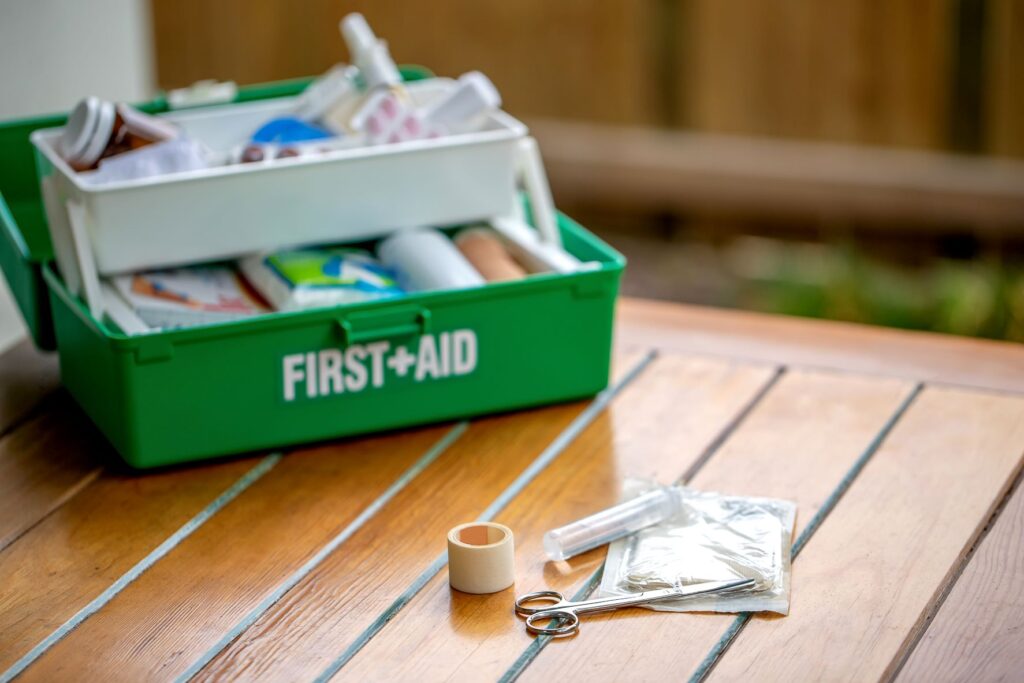The 5 Principles of First Aid
Having a good knowledge of the five principles of first aid can really help you in the event of a sudden emergency. These principles include: analyzing the situation, providing comfort, preserving, preventing and promoting.
Basic first aid care stabilizes a person
Basic first aid is a great way for someone to help in an emergency situation. It can also be a life-saving technique. It can stabilize a patient until professional medical attention arrives.
You will need to assess the situation to determine what actions you should take if you are a first responder. You might need to perform CPR and stop bleeding. Also, make sure the victim is breathing. You’ll also need to gather information to report to local authorities.
First aid is the process of stabilizing a patient, which can be as simple as providing a quick bandage. If you’re administering first aid, make sure to use the right equipment. This includes wearing gloves, safety glasses, and breathing barriers. Proper hygiene is essential in order to protect yourself. This includes washing your hands with antibacterial soap.
You should remain calm even though you are performing basic first aid. During an emergency, you may feel a bit panicked. If you’re calm, you’ll be able to assess the situation and determine if you need to call 911. This will allow you to comfort the person who is in distress. Remember that you may need to ask permission from the victim to care for them. They may not be able to understand what you are asking if they are a child or an elderly person.
When administering basic first aid, the most important thing is to be safe. You need to protect yourself and your family as well as anyone else who may be in danger. It is best to follow the three “C”s: circulation, breathing, and airway. This simple combination of steps will ensure that your patient is in a stable position and will be able to breathe.

Preserve, prevent, and promote
It doesn’t matter if you are a doctor or not, it is vital that you know the basics of first aid. These principles are about critical life-saving interventions, and the importance education and instruction.
These principles are often referred to as the ABCs of first aid. They are Airway, Breathing and Circulation. You should start with the airway, as an obstructed airway is a life-threatening emergency. Next, ensure that the victim is breathing and, if necessary, provide rescue breathing. Also, ensure that the victim remains stable and dry and that they don’t become ill before you send for medical assistance.
Emergency health professionals use the ABCs to remind them of the correct actions to take in an emergency. You must train your brain to save lives in these situations.
First aid is the immediate help given to anyone who has suffered an illness or injury. This includes administering treatment, relieving pain, and promoting recovery. First aid is not a substitute for medical care, but it should be used in conjunction with medical treatment. It may also involve CPR, which is a invasive procedure that can lead to further injury to the patient.
A systematic review is used to evaluate and identify evidence that supports a treatment. It is a rigorous process that follows strict guidelines. A knowledge synthesis unit or task force writing group typically conducts the review. To review the evidence, a task force usually includes experts in the field as well as outside experts.
A summary publication summarises the evidence and provides an evaluation of it. The summary document outlines the task force’s insights and discusses the value of the evidence.
Reassurance
People who have been trained in first aid can provide comfort in times of need. These people can provide basic support until professional assistance arrives. They can help you remain calm and collected when under pressure. This can prevent panicking and reduce stress levels in injured people.
It is important to keep an injured person warm and dry until help arrives. This will help them recover from shock and stop blood loss. It can also prevent them from getting further diseases. Infected wounds can be toxic, so keeping the wounds clean and dry is important. In an unconscious state, it is important to keep the injured person stable. First aid’s goal is to protect the unconscious and prevent further infections.
Reassurance can reduce anxiety, pain, and help you to provide more support for emergency services. Reassurance can help you avoid panicking and exacerbating the shock. It can also help give the injured person more energy and hope.
First aid is an essential part of our lives. People should never hesitate to offer help to someone in need. It can save a life and prevent more illnesses from happening.